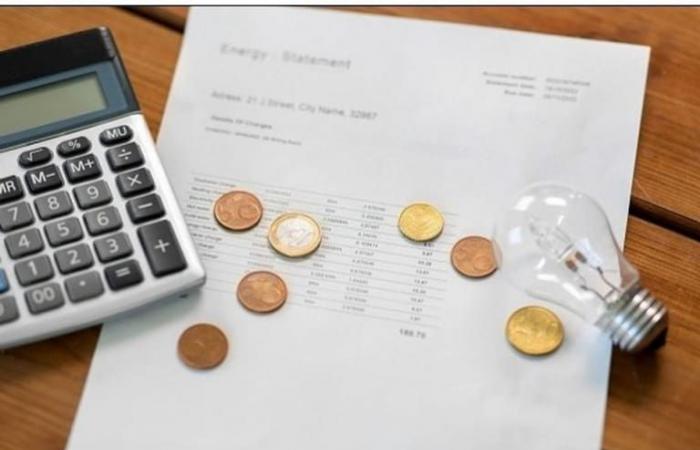
Hear
After confirming a significant slowdown in inflation in May, of 4.2% vs. 8.8% from the previous month, the increase in gas and electricity rates announced could put a temporary floor on the price index, since would have an impact of between 0.7 and 0.9 percentage points this monthaccording to private estimates.
The Ministry of Energy determined for June a reduction of subsidies in energy services for businesses, industries and all residential users, with average increases of between 6% and 19% in gas (depending on income level), and between 18% and 94% in electricity. In addition, it reduced the maximum subsidized volume for low- and middle-income electricity users. Therefore, the increases could be greater for those who exceed those blocks –250 kwh per month for those with medium income (N3) and 350 kwh for those with low income (N2)–, since for the surplus they will pay the same price as high-income users (N1).
In specific examples, a gas bill a Metrogas N1 home will go from costing $26,114 to $27,691 (6%); an N2, from $19,871 to $23,651 (19%), and an N3, from $22,819 to $24,968 (9%)according to estimates by the consulting firm Economía & Energía (EyE), directed by Nicolás Arceo.
“In year-on-year terms, natural gas rates verify increases higher than inflation in the last year at all income levels,” says the report, which indicates year-on-year increases in June of 406% for N1, 745% for N2 and 544% for N3. This situation was expected with the change of government, since the cost of public service rates had lagged far behind the rest of the prices of the economy.
In electricity, the increases are greater, because the previous increase had been in February and the amount of subsidies that medium and low-income users received was higher. In detail, an electricity bill in the metropolitan area of Buenos Aires (AMBA) of an N1 home will go from costing $29,651 to $34,953 (18%); an N2, from $11,327 to $21,966 (94%), and an N3, from $15,184 to $26,259 (73%)according to EyE estimates.
“In the AMBA region, lower-income users (Level 2 and Level 3) see the largest year-on-year increases, as a result of the increase in the seasonal price of electrical energy and, centrally, for the recomposition of the distribution added value (VAD). The average consumption of low-income households is around 410 kwh per month. Therefore, The application of the base consumption block on N2 users will result in significant increases for households that consume above 350 kwh”says the report.
The consultant also highlights a situation that the Government views with concern and that limits the pace at which they can continue removing subsidies: Although rates are still below the values reached at the end of the last decade, their impact in relation to family income is very high.. This is due to the sharp drop in purchasing power in recent months, due to the inflationary acceleration since economic activity began to contract last September.
“The evolution of the relationship between the rate and the average salary in the economy is a metric that allows us to bring the analysis closer to the notion of whether rates are affordable, reflect a standard level or, on the contrary, are burdensome for the population. In this sense, the modification and update of the tariff scheme for the network gas service, after a year without adjustment, placed the rate/salary ratio for the three income segments around the maximum level of the series at the end of 2018 and one percentage point above the average of the 1990s″says the consultant.
In electricity, the adjustment of the rate tables in the month of February led to the rates of high-income users, in relation to the average salary in the economy, will reach the highest levels of the series. However, and despite the increase in the price of electricity, the rates corresponding to middle and low income segments in June register a lower incidence.
“However, the new consumption ceilings established in the tariff tables for low and medium-income households and the cost of excess consumption at the prices established for high-income users will determine that, during times of high consumption, such as winter and summer, Electricity rates for lower-income households will see an even more significant increase”says the consultant.
Economist Fernando Navajas, specialized in energy, warned that, although the average increase for low-income users is 72% for consumption that is usually used as a reference (300 kwh per month), There is a significant absolute jump for higher consumption, with bills that escalate to between $30,000 and then more than $40,000 without taxes.
“This is relevant in terms of impact on low-income households. It is estimated that there are close to half a million AMBA N2 households with bills of $60,000being more than 90% of greater Buenos Aires (GBA),” said the chief economist of FIEL.
Navajas also pointed out that the increase has little risk of leading to prosecution due to the unreasonableness of the scheme with respect to N2. “As a segmentation reform strategy, it goes in the right direction of advancing a slower convergence for N2 and a somewhat faster one for N3, which is a group very similar to N1 in terms of consumption concentration curve,” he indicated.
With the announced rate increases, added to the lower international energy prices and the authorization of the Néstor Kirchner gas pipeline, the consulting firm EyE estimates that this year, The State will end up contributing US$6,516 million in subsidies, equivalent to 1% of GDP. In this way, there would be a sharp drop in relation to the US$9,683 million spent last year (1.5% of GDP).
“Energy subsidies in 2024 would show a decrease compared to what was verified the previous year, mainly as a result of the fall in international LNG prices and increase in gas transportation capacity natural from the Neuquén basin, processes that resulted in a decrease in the cost of supply. At once, the abrupt reduction of subsidies for commercial and industrial users of the general serviceboth electric energy and natural gas, which accounted for a significant portion of the subsidies disbursed throughout last year, allowed us to improve the average price paid by demand,” said the consultant.





